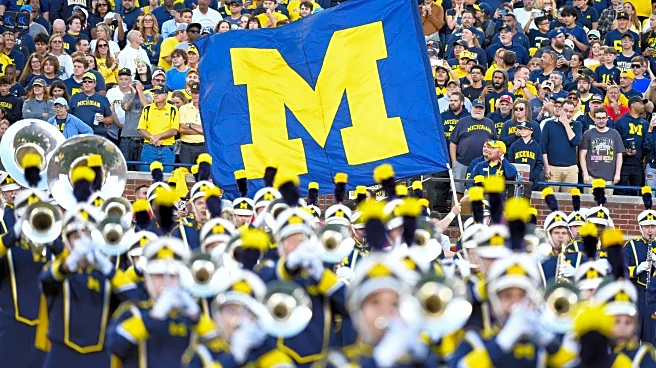What's Happening?
The college football season has kicked off with significant changes in team rankings following Week 1. LSU has claimed the top spot after a 17-10 victory over Clemson, showcasing a strong second-half performance. Florida State also made a notable jump from No. 49 to No. 3 after defeating Alabama 31-17. The rankings, which are based on a combination of resume and performance, reflect the early volatility of the season as teams face varying levels of competition. Other teams such as Miami, Texas, Clemson, and Notre Dame remain in the top 10 despite losses, due to their competitive performances against strong opponents.
Why It's Important?
These early rankings are crucial as they set the tone for the rest of the college football season. Teams that secure victories against highly ranked opponents gain significant momentum and visibility, impacting their chances for postseason play and bowl game selections. The rise of LSU and Florida State highlights their potential as strong contenders for the national championship. Conversely, teams like Alabama, which fell to No. 23, face increased pressure to perform in upcoming games to regain their standing. The rankings also influence recruitment, fan engagement, and media coverage, affecting the overall dynamics of college football.
What's Next?
As the season progresses, teams will continue to face off against both conference and non-conference opponents, which will further influence their rankings. LSU and Florida State will aim to maintain their positions by securing wins in upcoming games. Teams that experienced losses, such as Alabama, will need to strategize and improve their performance to climb back up the rankings. The rankings will continue to evolve as more data becomes available, providing a clearer picture of team strengths and weaknesses. Fans and analysts will closely watch these developments, anticipating potential shifts in the rankings.













